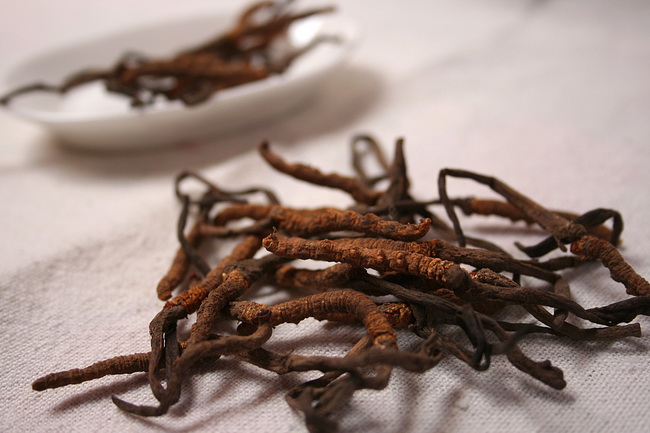- Make It Yourself Lavender Heart-Shaped Bath Bombs!
- 20 Things You Never Knew About “Down There”
- 12 Best Foods For Those Suffering From Arthritis Pain
- 12 Personal Hygiene Mistakes Almost Everyone Makes (Mom Never Told You About #4!)
- 15 Medicinal Plants And Herbs From The Cherokee People
- 12 Mind-Blowing Benefits Of Drinking Coconut Water During Pregnancy
- 12 Outstanding Winter Foods That Won’t Fatten You Up Like A Christmas Turkey
The Most Potent Healing Mushroom on This Planet

Photo credit: bigstock.com
Of all the hundreds of varieties of edible mushrooms on this planet, one stands head and shoulders above the rest; Cordyceps. Although it has actually been used in traditional Chinese medicine for thousands of years, this mushroom really burst into the mainstream back in 1993 when the women’s track and field runners from China broke nine world records at the Chinese National Games, held that year in Beijing, China. Suspected of using steroids, all the women on the team were tested but the results were negative for anabolic steroids. Finally, the coach revealed that the compound they used wasn’t synthetic at all, but completely natural. Daily consumption of a tonic made from Cordyceps is what improved his team’s stamina, endurance, and energy levels. This highly publicized incident pushed Cordyceps from the dark and into the light of modern medicine.
Although Cordyceps has no steroidal compounds, it does improve performance, and helps the body to build muscle. However, this mushroom also has many other powerful compounds that can help those who suffer from lung disease, cancer, diabetes, and more!
This powerful fungus has been greatly treasured throughout China and has been used for numerous health conditions, as a sexual aphrodisiac, and as an adaptogenic herb, helping people’s body’s better cope with stress. This mushroom is almost legendary in its ability to improve and modulate that immune system, improve energy levels, as well as being a powerful anti-inflammatory. This mushroom is perhaps the world’s most perfect rejuvenator and has anti-aging effects that are very beneficial for the elderly.
There are two different types of Cordyceps mushrooms, Cordyceps militaris or Cordyceps sinensis. Although they vary slightly, they both contain the same compounds. Wild Cordyceps militaris is found only in the Tibetan Plateau region, which means it only grows in the high mountains in parts of Tibet, China, India, Nepal, and Butan. Cordyceps sinensis is one of a species in a genus of literally hundreds of species that are found throughout the world. It’s the wild version from the Tibetan region that is most highly prized.
Although we call Cordyceps a medicinal mushroom, it’s actually a fungus. A rather strange, parasitic fungus at that. The fungus invades the larvae of a caterpillar moth, killing the larvae within. As the fungus feeds on the body of the larva, it grows until it burst out of the cocoon with an orange-brown fruiting type of body about 10 centimeters in length and ½ of a centimeter wide. Unlike other mushrooms, Cordyceps have a curved shape that looks like a club or cane. Traditionally, the remains of the dead caterpillar larvae, along with the fungus, are harvested at a precise time. It is then dried and bundled for sale.
Continue to Page 2

































gloriabundance
May 11, 2015 at 10:02 pm
I thought you would have some for sale. Not even interested in the infi if i cant get it. Seriously want some.